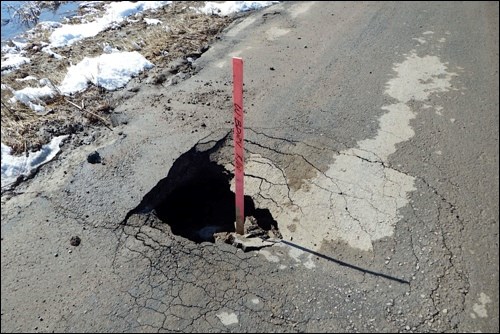Saskatchewan 340 in the Hafford area has the dubious distinction of being listed among CAA’s top 10 worst roads in Saskatchewan.
Motorists, cyclists, motorcyclists and pedestrians have nominated and voted for their worst municipal roads and highways over the past several weeks, with Saskatchewan 340 turning up in the number five spot.
First on the list is Highway 4 in the Dorintosh area. Others listed are:
No. 2 - 8th Avenue North, Regina;
No 3 - Saskatchewan 9, Hudson Bay (placed No. 5 in 2018 CAA Worst Roads);
No. 4 - 52nd Street East, Saskatoon;
No. 6 - Grant Drive, Regina (placed No. 8 in 2019 CAA Worst Roads);
No. 7 - Highway 33, Regina;
No. 8 - Highway 13, Shaunavon; and
No. 9 - 20th Street West, Saskatoon.
There is a three-way tie among Saskatchewan 35, Weyburn; Saskatchewan 3, Hudson Bay and Saskatchewan 9, Canora for the 10th spot.
CAA’s 2021 Worst Roads Campaign took place from April 7 to 27. Saskatchewan road users were invited to nominate and vote for the worst roads they had recently travelled on. Voting took place online at caask.ca/worstroads with one vote per road per email every 24 hours allowed. Photos of worst roads were also accepted. The CAA Worst Roads campaign did not run in 2020 due to the onset of COVID-19.
Potholes and crumbling pavement remained as the number one problem reported during this year’s CAA Worst Roads Campaign, according to a press release.
CAA says vehicle repair bills resulting from encountering potholes can be costly, but potholes are not the only problem when it comes to poor road conditions. Other pavement problems like cracking, rutting, and foundation damage can result from moisture, traffic and poor drainage.
CAA cites several factors that can cause deterioration of roads ‑ everything from weather conditions, age of the roads, heavy traffic and lack of maintenance. In cold climates like Saskatchewan, the freeze-thaw cycle plays a large role in creating potholes – a problem that occurs when temperatures regularly go above and below the freezing point. When rain or snow seeps through cracks and openings in the pavement, it freezes and expands, causing the pavement to heave upward. Then as temperatures rise, the ground underneath the pavement returns to its normal level, leaving a cavity or hole which breaks apart with continued use of vehicles driving over the fractured pavement.
Saskatchewan is a landlocked province and has 250,000 kilometres of roads, the highest length of road surface compared to any other province.
According to theCAA’s Cost of Poor Roads in Canada Study, the average Canadian driver pays an extra $126 per year, which over a 10-year period of a car’s lifespan, adds up to around $1,260. In Saskatchewan, the average annual cost per driver is $97 and totals just under $1,000 in a 10-year period. Repairing roads before they can deteriorate saves money for drivers and governments, asserts CAA.
CAA says the purpose of the campaign is to help highlight problems and dangerous road conditions in the province and to encourage decision makers to address those in most need of improvements.




